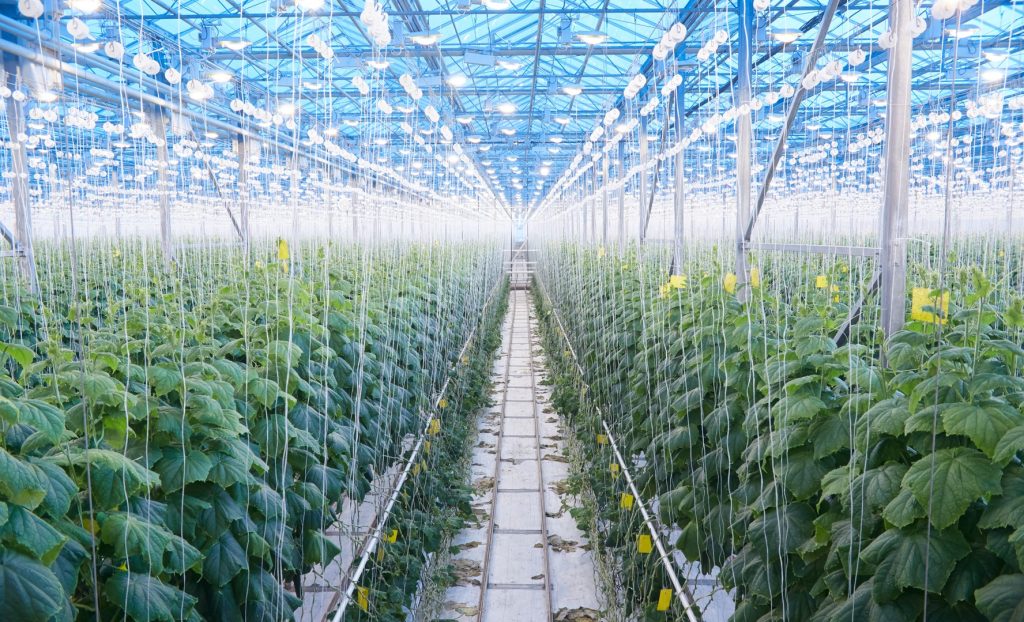Climate change is an ongoing crisis. Planet temperature is rising, having massive consequences, causing storms, hurricanes, floodings, extreme rains, droughts, and wildfires. The Sahara desert is expanding, resulting in dust emissions, intensified heatwaves, and rare rains. We need to take concrete actions to slow down climate change and its negative impacts. Let’s explore how the world can halt global warming and its consequences.
Climate Change as the Reason for Rapid Technological Development
The world needs technology development to address climate change and provide businesses with new, affordable solutions to transform their operations. Technologies that serve to respond to the challenges are known as climate technologies. They help:
- reduce greenhouse gas (GHG) emissions
- increase the efficiency of natural resource extraction
- minimize the use of energy
Energy-efficient technologies like solar power, wind energy, hydropower, and lithium-ion batteries help reduce greenhouse emissions. AI, robotics, and other solutions help resource producers optimize extraction techniques and reach places previously inaccessible. At the same time, energy consumption behavior is changing with increased electrification, eco-driving practices, and a shift towards walking and cycling.
Why Does the World Need to Accelerate the Development and Adoption of Climate Technologies?
Various countries worldwide aim to achieve net zero emissions by 2050 and limit the global temperature rise to 1.5° C. However, according to a report by the International Energy Agency (IEA), we don’t meet the required targets currently.
Since the UN Framework Convention on Climate Change was signed in 1992, CO2 emissions from energy and industry have increased by 60%.
There is a need to increase efforts to make Net Zero 2050 true. Currently, many of the technologies for green transition exist, and the goal is to accelerate their adoption. Between now and 2030, the world needs to deploy all available clean energy technologies massively. This includes renewables, electric vehicles, and energy-efficient buildings. We need to create a cost-effective and dynamic energy economy driven by renewables such as solar and wind energy. According to Mike Butcher, Editor-at-large of TechCrunch, climate technologies are going to see large developments in the next few years, starting a new era for climate tech startups.
Threats and Challenges that Make Climate Tech Developments Urgent
According to the assessment report by the United Nations’ Intergovernmental Panel on Climate Change, global warming has led to irreversible impacts on people and the environment having the following consequences:
-
Depletion of natural resources
Climate change causes unsustainable consumption of natural resources. As a result, glaciers are melting, sea levels are rising, and forests are becoming hotter and drier. This damages urban infrastructure and affects human life and economic activity, especially in coastal cities and settlements.
-
Health problems
Co-chair of the IPCC’s Working Group II, Hans-Otto Pörtner, says it’s scientific evidence that climate change is a threat to human well-being. Hazards from storms, heat waves, drought, and flooding affect people’s health and quality of life. According to Pörtner: “Any further delay in concerted global action will miss a brief and rapidly closing window to secure a liveable future.”
-
Disrupted food production
Extreme weather conditions such as drought and floods can disrupt food production causing land degradation. Warming and chemical changes in oceans impact aquaculture and fisheries. As a result, millions of people experience acute food insecurity and water scarcity. The largest impacts are observed in Africa, Asia, Central and South America, Small Islands, and the Arctic.
-
Socioeconomic damages
Global warming affects society on many levels, changing economic activity, education, lifestyle, and demographics. Direct and indirect impacts include the change in physical infrastructure, productivity, work, supply chain, and migration.
Climate-induced migration is growing as people from most-affected countries need to move to safer places. According to the UN Refugee Agency, each year since 2008, weather emergencies have forced around 21.5 million people to move, on average.
Industries Being Transformed the Most Amid Climate Change
There is a need for significant changes across industries to reduce the risks of climate change. Let’s go over the sectors being transformed the most:
Energy consumption and production trends
The energy sector is a major cause of climate change, and it is undergoing a complete transformation. Two-thirds of all harmful greenhouse gas emissions come from the burning of fossil fuels for power generation. It is vital to cut emissions by switching to clean energy sources such as solar, wind, and hydropower energy and double the low-emission electricity supply within the next eight years.
Industries consuming energy the most, including transport, manufacturing, residential space heating, and mining, need to adapt and optimize. For this reason, the share of renewables, geothermal energy, biofuels, and biomass power plants is increasing. Companies continue to work on new solutions and combine different technologies. For example, battery technologies with renewable energy systems are used to store energy when the sun isn’t shining. At the same time, some projects work on upcycling batteries to prolong their life and make them more affordable. For the next stage of energy transformation, we need systematic innovation in flexible energy systems, electrification, and recycling practices.
Innovation trends in transportation
According to a report by IEA, from 1990 to 2021, transport emissions grew at an annual average rate of about 1.7%, faster than any other end-use sector. In 2021, transport activity led to an 8% increase in CO2 emissions over the previous year. This number needs to drop by around 3% each year by 2030 to achieve net zero by 2050. Scientists, private companies, and governments are developing technologies to tackle climate problems caused by transport emissions.

Electric cars don’t have a negative impact on carbon emissions as batteries store energy and power the motor, thus replacing traditional fuel engines.
Despite the progress made, today’s transport relies mainly on oil. Key technologies to achieve carbon-neutral transport are battery-powered electric vehicles and hydrogen-powered transportation.
EVs don’t have a negative impact on carbon emissions as batteries store energy and power the motor, thus replacing traditional fuel engines. Hydrogen technologies are another big trend that attracts large investments in different countries. One of the leading car companies focused on this technology is Toyota, which develops a range of hydrogen-powered cars. Hydrogen fuel cells combine hydrogen and oxygen from the air to generate electricity and power a motor.
Agriculture innovation trends
According to the World Bank, agriculture generates 19-29% of total greenhouse gas emissions. At the same time, climate change reduces the productivity in agriculture, which faces challenges like scarcity of natural resources and growing demand for food. All this creates the need for innovative solutions and transformation of the industry.

The world plans to slow global warming to 1.5°C by 2050
According to the World Government Summit, the new era in the industry, called Agriculture 4.0, will run due to technological advancements like sensors, devices, machines, GPS technology, 3D printing, and more. Climate-smart solutions like rainwater harvesting systems, climate-resilient production systems, and efficient water management systems will allow farms to be more profitable, efficient, and sustainable.
Another step we can take is switching to a sustainable diet, that is, eating healthy and consuming products with a low environmental impact.
Tourism innovation trends
Climate change impacts tourism greatly and transforms tourist destinations. People tend to visit and experience places that are at risk of disappearing. For example, tourists may choose Antarctica to admire the glaciers or Maldives as the island is vulnerable to rising sea levels. On the other hand, the tourism industry contributes to the emission of greenhouse gasses and needs action to reduce negative impacts. Tourism is a wide sector consisting of other sectors like transport, hotel industry and services, and others. Each of them needs more sustainable solutions.
Forms of responsible traveling such as ecotourism have been growing, and technology helps expand environmentally-friendly practices. Due to AI and Big Data, it is possible to follow tourism patterns, anticipate their needs, and prepare sustainable accommodations. For example, hotels can update their transportation offerings, including trips by electric cars, and eBikes. Other technologies like blockchain, AR and VR allow virtual tourism opportunities providing people with immersive experiences.
How much will climate change mitigation progress in the near future?
Climate change is a global challenge that requires an urgent response. Actions are needed now to mitigate dramatic impacts. The world plans to slow global warming to 1.5°C by 2050. According to IPCC Chair, Hoesung Lee: “We have the tools and know-how required to limit warming.” Many countries take climate actions, by developing policies, regulations, and market instruments.
The costs of renewables such as solar, wind energy, and batteries dropped by 85% since 2010, energy efficiency increased, deployment of renewable energy expanded and the rates of deforestation fell. The goal is to scale up and apply solutions more widely. The next few years are critical as we need to halve emissions by 2030. With continuous progress and careful energy consumption, we can achieve the world’s climate targets.

